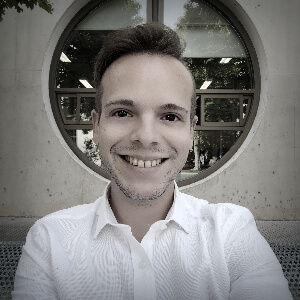The Prevention of Suicidal Behavior in Adolescents


Written and verified by the psychologist Gorka Jiménez Pajares
The outlook is bleak. Thousands of teenagers are taking their own lives. Moreover, the figures, far from improving, are getting worse. Indeed, suicidal behavior in adolescents has become an extremely serious problem. For this reason, increasing amounts of money have been allocated to the issue in an attempt to reverse the trend.
As a matter of fact, adolescent suicide has become an epidemic. It’s considered to be one of the main causes of death during adolescence. This is a stage marked by changes at the biological, social, and psychological levels (Fonseca-Pedrero et al., 2022).
“The prevention of suicidal behavior in minors continues to be a pending issue.”
-Eduardo Fonseca-Pedrero-
Suicidal behavior in adolescents: a serious epidemic
The epidemic can be prevented if we take steps to stop this desperate behavior. In fact, this is the central message of our article. There are effective interventions available. And research suggests that as well as being effective at a human level, the right investment in these interventions is also profitable at a social level.
Although we’re a long way from being able to describe suicidal behavior and all of its potential triggers, we possess much more knowledge than we did a few years ago. For instance, we now know that people who commit suicide usually go through certain common phases. First, they think about the issue. Next, they talk about it (via threats or verbal and non-verbal expressions), plan it, and ultimately carry it out (Fonseca- Pedrero et al., 2020).
“Suicidal behavior is part of human diversity. It is a complex, polyhedral, multidimensional and multicausal phenomenon.”
-Eduardo Fonseca-Pedrero-

Evaluation: an important starting point
Rigorous evaluation should be the short but accurate prelude to any effective intervention. To help professionals in this process, there are a number of questionnaires. However, the best tool is the interview with the minor, which must be empathetic and warm. The SENTIA self-report method can be used in a complementary way. It contains questions such as (Díez et al., 2021):
- Are you planning to take your own life?
- Have you ever had the idea of taking your own life?
- Have you told someone that you want to commit suicide?
The questions on the SENTIA scale are clear and direct. This is because we know that, when talking about suicide, it’s better to do it decisively and bluntly, rather than by asking vague and confusing questions. Therefore, the SENTIA scale is a good tool for evaluating this complex problem (Díez et al., 2021).
“This scale makes it possible to assess suicidal behavior (ideation, planning, intention, communication, and behavior) in adolescence.”
-Eduardo Fonseca-Pedrero-
Interventions for preventing suicidal behavior in adolescents
The World Health Organization, under the title Live Life has promoted a series of recommendations for preventing suicide. They’re empirically based strategies (supported by scientific evidence) (Fonseca-Pedrero et al., 2022).
- Limit access to the means of suicide. For example, drugs.
- Interact with the media for the responsible reporting of suicide.
- Foster socio-emotional skills in adolescents.
- Early identify, assess, manage, and follow up anyone who’s affected by suicidal behaviors.
How to prevent suicide in adolescents
The answer to this question is complex since there are a considerable number of interventions with the objective of preventing suicidal behavior in adolescents (Reifels et al., 2022).
In fact, prevention can be carried out in a multitude of contexts. These range from the family, through the school or community, to the individual.
“Educational centers are the ‘natural’ and ideal place to develop and implement actions for the promotion of emotional well-being and the prevention of suicidal behaviour.”
-Eduardo Fonseca-Pedrero-

The AIM-SP model: an effective strategy to prevent suicidal behavior in adolescents
The AIM-SP model integrates different interventions. It begins with an assessment in which the clinician clearly and explicitly asks the adolescent if they’re experiencing or have ever experienced suicidal thoughts. The objective of these questions is to identify factors and elements that could be considered a risk.
The therapist subsequently conducts an intervention based on the Stanley-Brown Safety Plan (Stanley et al., 2012). They can also integrate other psychotherapeutic interventions. For example, dialectical-behavioral therapy (Fonseca et al., 2022).
Throughout the process and after its completion, they carry out monitoring for various purposes. For instance, they’ll pay increasing attention to an adolescent in a high-risk situation. They’ll also make attempts to involve family and friends in the prevention process.
In addition to the AIM-SP Model, there are other intervention modalities. For instance, the Youth Aware of Mental Health (YAM) program (Carli et al., 2021). Its purpose is to prevent suicide in the adolescent population.
Today, adolescent suicide is a global issue. As a result of these young people’s suffering, as well as the worrying death figures, prevention is essential. Therefore, public health institutions must adopt plans to reduce the figures until they reach zero.
“Suicidal behavior in adolescents is a public health problem both because of its prevalence and the associated personal, family, educational, and socio-health consequences.”
-Eduardo Fonseca-Pedrero-
All cited sources were thoroughly reviewed by our team to ensure their quality, reliability, currency, and validity. The bibliography of this article was considered reliable and of academic or scientific accuracy.
- Carli, V., Iosue, M., y Wasserman, D. (2021). Universal suicide prevention in schools. En D. Wasserman (Ed.), Oxford Textbook of Suicidology and Suicide Prevention (2 ed.) (pp. 653–664). Oxford University Press.
-
Del Casal, A. D. G., Enesco, C. S., de Albéniz Iturriaga, A. P., & Pedrero, E. F. (2021). Evaluación de la conducta suicida en adolescentes: Validación de la escala SENTIA-Breve. Actas españolas de psiquiatría, 49(1), 24-34.
- Díez, A., Enesco, C., Pérez de Albéniz, A., y Fonseca-Pedrero, E. (2021). Evaluación de la conducta suicida en adolescentes: Validación de la escala SENTIA-Breve. Actas Españolas de Psiquiatría, 49(1), 24-34.
- Fonseca-Pedrero, E., y Pérez de Albéniz, A. (2020). Evaluación de la conducta suicida en adolescentes: A propósito de la escala Paykel de Suicidio. Papeles del Psicólogo, 41(2),106-115. https://doi.org/10.23923/pap.psicol2020.2928
- Fonseca-Pedrero, E., Pérez-Albéniz, A., Al-Halabí., Susana. Conducta suicida en adolescentes: creando esperanza a través de la acción. Papeles del Psicólogo (2022). https://doi.org/10.23923/pap.psicol.3000
- Gillies, D., Christou, M. A., Dixon, A. C., Featherston, O. J., Rapti, I., Garcia-Anguita, A., Villasis-Keever, M., Reebye, P., Christou, E., Al Kabir, N., y Christou, P. A. (2018). Prevalence and Characteristics of Self-Harm in Adolescents: Meta-Analyses of Community-Based Studies 1990-2015. Journal of the American Academy of Child and Adolescent Psychiatry, 57(10), 733–741. https://doi.org/10.1016/j.jaac.2018.06.018
- Organización Mundial de la Salud (2021b). LIVE LIFE: An implementation guide for suicide prevention in countries. Organización Mundial de la Salud.
- Reifels, L., Krishnamoorthy, S., Kõlves, K., y Francis, J. (2022). Implementation science in suicide prevention. Crisis, 43(1), 1–7. https://doi.org/10.1027/0227-5910/a000846
This text is provided for informational purposes only and does not replace consultation with a professional. If in doubt, consult your specialist.








